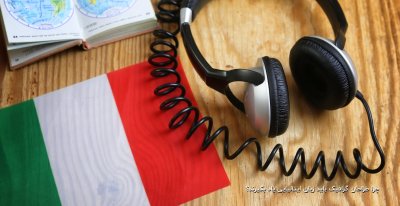Another name for gulf sets off a wave of anger
Sea change: A map maker gets caught up in a dispute over what to call the body of water -- Persian or Arabian.
By Frank D. Roylance
Sun Staff
Originally published November 24, 2004, 10:13 PM EST
For thousands of years, the people of ancient Persia and their descendants in modern Iran have called it the Persian Gulf.
But the National Geographic Society's map makers noticed that some U.S. military agencies and other map gazers use the name Arabian Gulf for the body of water on Iran's southwestern shore.
So they altered the 8th Edition of the society's influential Atlas of the World to include Arabian Gulf as an alternate name (in parentheses) under the traditional title.
That has landed them in hot water with Iranians from Los Angeles to Tehran. Not to mention the Iranian government, which on Tuesday banned National Geographic's publications and journalists from the country until the organization "corrects" the atlas.
The anger had been brewing for weeks. "A spit in us Iranians' faces!!" writes Padina Abbaspour in a reader-review of the atlas on the Amazon.com Web site. "This is you people trying to change and alter History and what is written down for generations!!"
The emotion reflects Iranians' deep pride in their ancient culture, and a long history of enmity toward regional Arab powers such as Iraq, with which Iran fought a bloody eight-year war in the 1980s.
National Geographic has received thousands of e-mails on the subject, and Amazon.com has posted hundreds of reader reviews of the $165 atlas, mostly from angry Iranians. Some of them see geopolitical conspiracy.
"It is a shame to see what once was a respected journal turned into a political backroom wheeler & Dealer and an Arab slave," wrote R. Zomorodi from Los Angeles. "The reason is due to the fact that The Saudi Royal family owns a large amount of shares in all US media and journals."
The emotional dispute has put Allen Carroll, National Geographic's chief cartographer, in the hot seat.
"We try to retain our independent judgment and not to be swayed by a response from a group with a particular interest," Carroll says. In a statement on the society's Web site, he defends the atlas, but promises to add "explanatory" and "clarifying language" to future editions.
Carroll has seen similar uproars before. "For instance, the Sea of Japan --. The Koreans want us to use the term East Sea," he says. And new atlas includes East Sea in parentheses.
Iranians are alleging other mapmaking insults, including a description of three tiny islands in the Gulf. Designated as Iranian in the last edition of the atlas, this time they're labeled as "Occupied by Iran" but "claimed by the UAE [United Arab Emirates]."
That change triggered this online eruption from an entity in Los Angeles called the Iran National Front USA: "The enemies of Iran should know, so long as there is one Iranian alive with blood pumping through his or her heart, even the thought of taking one grain of Iranian soil, will strongly be opposed and defeated. Long Live Iran."
It was all so predictable, says James E. DiLisio, professor of geography at Towson University. "I'm surprised the National Geographic got in the middle of it," he says.
Ethnically, Iranians are mostly Indo-European, not Arab. Ethnic and territorial disputes in the region go back "to Babylon and Nebuchadnezzar and Darius the Great back before the birth of Christ and before Islam appeared on the scene," says Geoffrey Kemp, director of regional strategic programs at the Nixon Center in Washington.
In the past 10 years especially, he says, Iranian nationalism has resurfaced as a force in the Islamic republic's foreign policy, even among reformers.
"We have a lot of positive things in Persian culture, and we want to preserve it," says Mohammad Ala, an Iranian-born business professor at California State University in Los Angeles
"Our history is 7,000 years old," he adds, arguing that even the prophet Mohammad spoke of the Persian Gulf.
National Geographic's 8-pound Atlas of the World has no official status. But among geographers, it's considered authoritative. "If you're after a daily reference, the National Geographic is the one we normally look at," says Towson's DiLisio.
Experts agree that the name Persian Gulf, or Khalij-e Pars, predates Arabian Gulf by a long shot. "The earliest references stemmed from the time of the Sumerian rulers in the third century B.C. That ought to be old enough to establish it," said James Bill, an Iranian specialist at the College of William and Mary.
British cartographers adopted the name Persian Gulf at the turn of the last century when the Anglo-Persian Oil Company was formed to tap Iranian oil, DiLisio says. When Standard Oil of California found oil on the Arabian side of the Gulf, he says, the Americans began using Arabian Gulf on their maps in deference to their hosts.
Pan-Arab nationalists adopted the use of Arabian Gulf in the 1950s as symbol of their movement.
"There's nothing people get more exercised about than the names of things," Bill says.
Some organizations simply call it "the Gulf" to avoid ruffling feathers, which also angers Iranians. "History is not a commodity you buy at Wal-Mart and discard after you get your immediate use out of it," says Mojtaba Aghamohammadi, an Iranian-born professor of diversity studies at the University of Phoenix. Iranians identify "existentially" with the name Persian Gulf, he argues, and "when you mess with people's identity, that's when war begins."
If Arabian Gulf has gained in popularity, it's not the result of overt policy. The United Nations requires Persian Gulf in all its documents. Persian Gulf has also been the only label sanctioned for U.S. government use since the State Department's Board of Geographical Names settled the issue in 1917.
Even so, U.S. agencies don't always comply, says State Department Cartographer Leo Dillon: "Part of it may be ignorance of the decision. Part of it may be working with Arab allies."
The National Geographic Society has almost always used Persian Gulf on its maps. But about three years ago the Emir of Sharjah, one of the seven United Arab Emirates, made a visit arranged by the president of American University, which has business ties with Sharjah. The emir alerted cartographers to the disagreement between the UAE and Iran over the ownership of three Gulf islands -- Abu Musa and the two Tunb Islands. "We weren't aware of the dispute," says David B. Miller, senior editor with National Geographic Maps.
But the emir wasn't finished. "He also mentioned that the Arab states along the southern shore call the Persian Gulf the Arabian Gulf," Miller recalls.
The cartographers knew the U.S. military often used Arabian Gulf, and its editors were seeing more frequent usage of the term in print and online. "We didn't want to change the name," says chief cartographer Carroll. But "we also didn't want people to go to our atlas looking for the Arabian Gulf and not find it."
So, the mapmakers added Arabian Gulf as an alternate name (in parentheses), beneath Persian Gulf. And the three disputed islands were re-labeled as "Occupied by Iran (claimed by U.A.E.)."
Miller says, "We wouldn't recognize any forced occupation or administration of sovereign territory."
But furious Iranians point out that the same atlas shows the disputed Golan Heights -- captured by Israel in 1967 -- not as "occupied" Syrian land, but as part of Israel, with a dotted line indicating the "boundary claimed by Syria."
Miller explains that "what exists on the ground, we try to show on our maps." The atlas reflects the fact that Israel annexed the Golan Heights in 1981, he says, but that its claim is controversial.
Cartographers made the changes "with no intention of offending anybody," he says. "But sometimes no matter how hard we try, we make some of our readers or customers unhappy."










